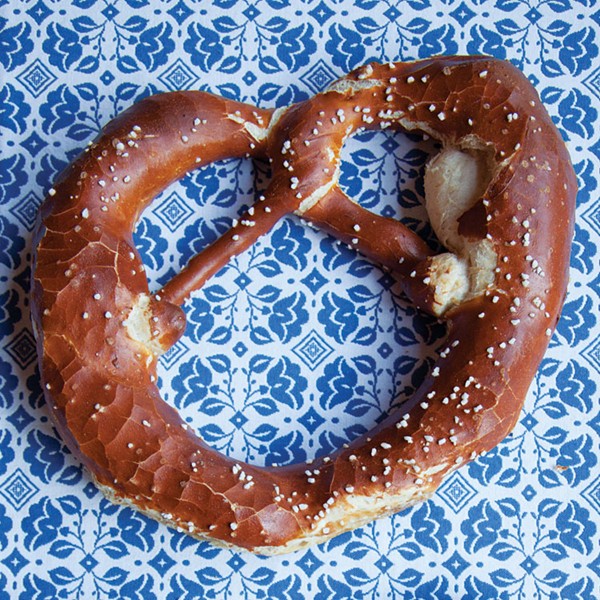Would we lye to you?
August 9, 2014 by Darcie
It may be a few weeks until Oktoberfest, but it’s never too early to start practicing your favorite German pretzel recipe. Over at The Salt, Paula Friedrich shares pretzel making tips, and even provides her mother’s recipe. The secret to getting that beautifully brown and crackly crust? Lye (yes, the same stuff that you use to clear drain pipes and make soap and lutefisk).
Using a technique that brings to mind the bagel making process, pretzels are dipped in a hot alkaline solution before they are baked. Using lye makes the solution very alkaline (lye can be nearly 14 pH), which “affects the way the Maillard reaction plays out when the pretzel bakes, says Bread Science author Emily Buehler. The Maillard process is integral to all bread baking – it shapes the way the crust forms and tastes. In the case of the pretzel, the Maillard reaction is responsible for the deep brown crust, crunchy arms and distinctive taste.”
A few traditionalists go so far as to import special lye from Germany to get the most authentic flavor, although you can find domestic food-grade lye in specialty shops or online. Using some type of alkaline bath is essential to getting color on your pretzels, according to Tony Tonelli, owner of a Philadelphia pretzel shop. “If you don’t put a browning agent on the product, the pretzel is white…If you let it go into the oven white, it’ll come out of the oven white.”
Since the lye bath is a dilute solution and the pretzels are baked after dipping, the lye won’t make you ill. But if using lye doesn’t appeal to you, there are alternatives. Some bakers use special baking soda flakes which are more alkaline than regular baking soda but less caustic than lye. You can also use regular baking soda, but your pretzels won’t be quite as brown.
Photo of Traditional German pretzels from indexed
magazine Saveur
Categories
- All Posts (6940)
- Antipasto (2135)
- Author Articles (247)
- Book News (935)
- Cookbook Giveaways (983)
- Cookbook Lovers (257)
- Cooking Tips (109)
- Culinary News (299)
- Food Biz People (552)
- Food Online (791)
- Holidays & Celebrations (272)
- New Cookbooks (149)
- Recipes (1500)
- Shelf Life With Susie (231)
- What's New on EYB (133)
Archives
Latest Comments
- kmwyman on Rooza by Nadiya Hussain – Cookbook Review and Giveaway
- Maryd8822 on The Golden Wok – Cookbook Giveaway
- Dendav on Danube Cookbook Review and Giveaway
- sanfrannative on Rooza by Nadiya Hussain – Cookbook Review and Giveaway
- darty on Danube Cookbook Review and Giveaway
- Atroyer7 on Danube Cookbook Review and Giveaway
- demomcook on What foods do you look forward to the most for each season?
- demomcook on Danube Cookbook Review and Giveaway
- Darcie on How cookbooks can help build resilience
- mholson3 on Danube Cookbook Review and Giveaway